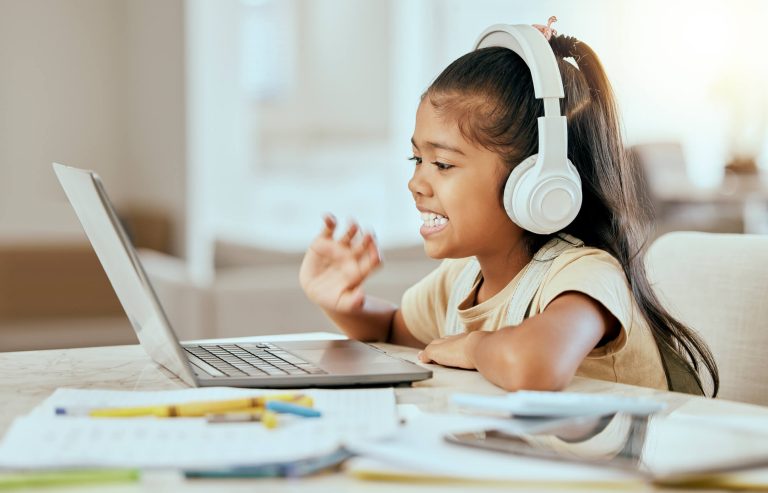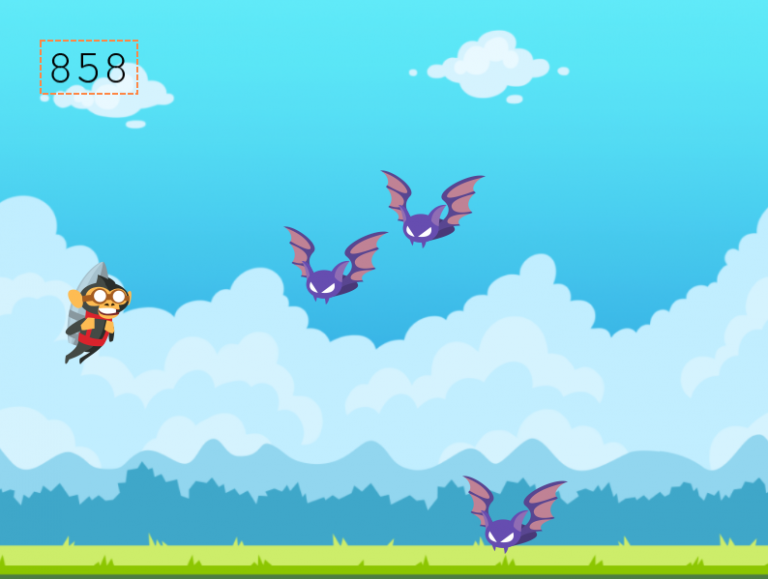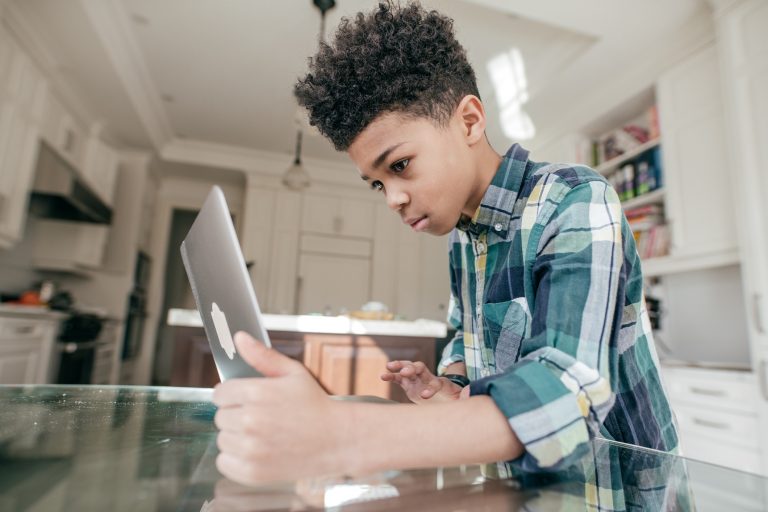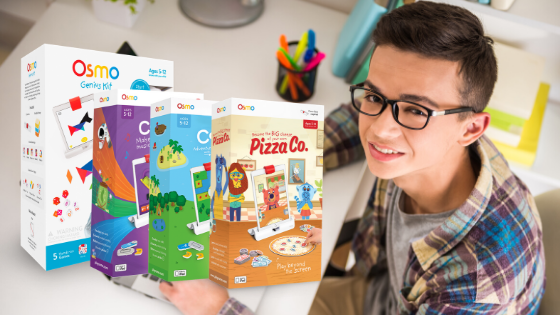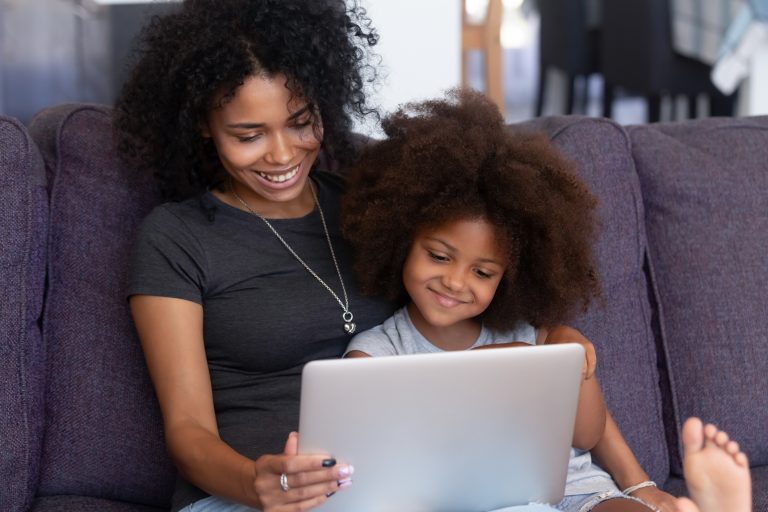Coding for kids – or computer programming for kids – is rapidly gaining popularity. With how dependent society has become on technology (especially now), it is no surprise that more and more people are looking into this seemingly unattainable skill and thinking, could I learn that?
Parents are especially enamored with the idea of their kids learning to code, with a recent poll indicating that 90% of U.S. parents would like coding for kids to be a part of school curriculums.
And why not? Learning how to code at a young age can set your child up for a lifetime of success. Thanks to the normalization of online learning, more kids are comfortable with the idea of extra classes taken via online coding academies and programs.
In this guide, we’ll discuss coding for kids: the benefits, the statistics, and why this particular brand of computer literacy is so important.
(And if you’re interested in a deeper dive into the more technical aspects of why coding for kids is so important, check out my article on Computer Coding for Kids: Is it a Fad or an Essential New Literacy?)
Table of Contents
What is Coding?
Coding (or programming) is a creative process executed by computer programmers wherein they tell a computer or machine how to perform a specific task. It involves writing executable scripts using computer programming languages like Java or Python.
Some see coding as a way of communicating with computers. Programmers give computers instructions, and the computer carries them out. People who know how to code (i.e., coders, programmers, developers) can create games, apps, computer software, websites, and interactive digital content.

10 Great Coding for Kids Resources
With the ever-growing importance of technology in our world, it’s no surprise that more and more parents are looking for ways to give their children a leg up by teaching them coding. And there are plenty of great options out there! Many online programs offer courses specifically tailored for kids, with fun exercises and games that make learning coding fun and engaging.
Some programs even allow kids to create their simple websites or apps, which can be a great motivator. Of course, it’s important to do some research to find the right program for your child’s needs and interests. But with so many great options available, there’s sure to be a perfect fit.
CodaKid
(Ages 6 to 18)
CodaKid is a great way for kids to learn how to use real programming languages and professional tools by creating games, coding apps, programming drones, building websites, and more. CodaKid has taught over 50,000 kids and teens. They offer courses specifically designed for children with age-appropriate content and difficulty levels. Their online coding classes are self-paced and flexible, so kids can learn at their own pace and fit learning into their busy schedules.
The online coding school is a great fit for everyone because it allows you to learn at your own pace, providing a great way for kids to learn how to code with their self-paced courses and 1-on-1 online lessons. Your kids will have access to awesome support from a team of engineers and teachers who can help your child solve any problems. The 1-on-1 option allows them to get the individualized attention needed to succeed.
Another perk is that they offer a Family Plan, which allows families with up to three students to save on course fees. A free trial for both is available for the self-study and private tutoring programs, so families can try the coding class before committing. With all of these features, it’s no wonder that CodaKid is an excellent choice for kids who want to learn to code!
Coding with Kids
(Ages 6+)
Coding with Kids is a kids coding academy that specializes in online, instructor-led classes and live, in-person classes in a growing number of markets in the US. Why I like them is that they have a Coding Ladder that takes kids from the very basics to high level vocationally focused coding classes in a well-planned, multiyear system.
Coding with Kids offers private 1:1 tutoring as well as small group formats, and they offer a series of online and in-person summer camps on exciting topics such as Roblox Game Development, Python programming, and more,
Code Monkey
(Ages 8+)
Code Monkey is a website that teaches kids coding through playful online games. In these games, children write code with the goal of helping a monkey gather bananas. As they play, they learn all of the important coding concepts such as logic, loops, direction, sequencing, and algorithms. As a result, Code Monkey is an excellent resource for teaching kids the basics of coding in a fun and engaging way.
The games on Code Monkey are carefully designed to introduce new concepts in a way that is easy for children to understand. And because they’re having so much fun playing the game, they don’t even realize they’re learning! If you’re looking for a way to teach your child coding, Code Monkey is a great option.
Tynker
(Ages 4-14)
Tynker is a self-paced online programming course for kids, created to teach them how to build their own games and apps. Tynker offers block programming and text-based classes, with a carefully designed curriculum to take your child from novice to expert coder.
The course is game-based and space-themed, with space aliens and rocket ships, and progresses through three levels of games/classes. Kids will enjoy learning coding concepts while they create their own projects in a fun and safe environment. With over 5,000 coding activities available, Tynker is the perfect way to introduce your child to the exciting world of programming.
Codemoji
(Ages 5-13)
Codemoji is a website that uses images to teach coding students the basics of HTML, CSS, and Javascript fun and easy. With Codemoji, students can create their own websites, animations, and more. The Codemoji curriculum is organized into courses where students can move at their own pace through prerecorded lessons.
By formulating solutions and learning to problem solve using images, students can develop a strong foundation in web development and coding. As a result, Codemoji is an excellent resource for students who want to learn to code engagingly and effectively. The website also offers a forum where students can ask questions and receive help from other coders.
In addition, Codemoji offers monthly coding challenges where students can put their skills to the test and earn badges for their accomplishments. With so much to offer, Codemoji is an outstanding resource for anyone interested in learning how to code.
Kodable
(Ages 4-11)
Kodable is a kids programming platform that uses engaging games to teach core coding concepts. The games are developed with input from real teachers and kids, resulting in a product that is both educationally sound and fun to play. In addition to teaching essential skills, Kodable also allows kids to build their own games and design characters. This self-paced learning environment gives kids the freedom to explore and learn at their own pace, allowing them to develop a deeper understanding of the material. As a result, Kodable is an effective tool for teaching kids the basics of programming.
Lightbot
(All Ages)
Lightbot is a programming puzzle game for kids available on iOS, Android, and Amazon app stores. In the game, kids solve puzzles by programming a robot to light up blocks in a specific sequence. The game is designed to be all-ages friendly and is suitable for first-time coders. The games revolve around a robot and blocks, and the goal is to get the robot to light up all the blocks in each level. Lightbot becomes increasingly challenging as you progress, but it’s a great way to introduce kids to the basics of programming.
Pluralsight
(Ages 14+)
Pluralsight has a huge selection of coding lessons for new and aspiring developers, with each course built around a storyline. The lessons are taught via video, reinforced through coding challenges and skills assessment tests to help students measure their progress. In addition, there is an online community forum where students can ask questions and get answers from Pluralsight staff and other students.
Whether you’re just starting out or looking to take your coding skills to the next level, Pluralsight has a course for you. With flexible learning options and a variety of courses to choose from, Pluralsight is an excellent resource for anyone interested in learning to code.
Vidcode
(Ages 11+)
Vidcode is a learn-to-code platform for teenagers that uses a highly visual coding interface. With Vidcode, students can create video filters, simulations, augmented reality projects, and more while learning computer science fundamentals and web programming.
Vidcode is an excellent tool for helping teenagers develop computational thinking skills and explore creativity. The platform is easy to use and provides plenty of opportunities for students to experiment and learn. We highly recommend Vidcode for anyone looking for a fun and educational way to teach teens how to code.

3 Main Benefits Of Coding
Young minds are adaptable and malleable. They are quickly able to absorb and retain knowledge. Kids that are exposed to coding at a very young age have the benefit of learning how to critically assess situations, explore different perspectives, construct creative solutions, and execute the trial-and-error learning process. The earlier kids learn how to code, the easier it will be for them to master this skill and all the subsequent skills coding encourages.
Promotes Logical & Critical Thinking
Coding for kids encourages logic, reasoning, and critical thinking.
Several recent studies have found a positive correlation between computer programming and cognitive skills. According to the results, students who knew how to code typically scored higher on cognitive ability tests than those with little programming experience. An MIT study also highlighted that computer programming could benefit cognitive development.
When kids learn to code, they are taught how to break complex problems into smaller, more manageable pieces to write functional scripts. This process is called decomposition, a valuable skill that children find incredibly useful when confronted with real-life complications.
And it doesn’t end at decomposition. Because coding follows a similar approach to problem-solving, kids who code have an advantage in developing this skill.
In coding, a programmer needs to (a) identify the problem, (b) analyze it, (c) create a viable solution, (d) test the solution, and (e) repeat the process if the problem is not addressed.
(If you want to know why problem-solving is such an important skill, I have an article on why it’s The #1 Skill That All Kids Need to be Successful in an Uncertain Future. Do give it a read!)
As kids learn to code, they become familiar – and ultimately comfortable – with the problem-solving process. The more they get used to writing, rewriting, troubleshooting, and debugging lines upon lines of code, the more it becomes second nature for them to cycle through the steps and execute them properly.
Related Reading:

Promotes Focus & Creativity
Because computer programming seems so technical, many people don’t equate it with creative thinking — especially given how methodical and procedural the act of coding can be. But programmers know this all too well: coding can promote creativity. A certain level of creative thinking is required when you’re programming from scratch.
Think about it; kids who know how to code can develop apps, games, animations, websites, and more. They can create interactive content by writing down lines of existing code (or snapping together some blocks, seeing as block coding is a popular format of coding for kids). Still, the actual blueprint for that content comes from their imagination.
Once kids learn how to code, the way they consume digital media and technology changes. Every time they try out a new app or play a new video game, they can draw inspiration for their creation. They could look at an online fighting game and wonder, what if this was an adventure game instead? And with their coding knowledge, they could make this hypothetical a reality.
Coding can be a viable outlet for their creative expression. Some kids draw. Some kids play an instrument or sing. Some kids code.
And with this creativity comes a certain level of focus, too. See, when kids develop a program, they have to consider all aspects of it in order to write the corresponding code.
Let’s take developing a video game as an example. Kids will have to write code to make a character walk forwards, backward, and maybe even side to side. They’ll have to write code so the character can jump or dodge. They also have to consider how a character interacts with the environment and then write code that covers all eventual outcomes following that interaction (i.e., if a character picks up an object, if a character destroys an object, if a character uses an object, etc.).
It’s a lot to think about. If a child doesn’t have the right amount of focus and organization, they may end up coding a lot of bugs or filler in their script instead.
Encourages Confidence & Resilience
If you’ve ever tried coding (or even watched someone code), you probably have an inkling of how precise it can be. Especially text-based coding! Block coding is a little forgivable, but text-based coding requires perfect syntax. One comma or semicolon out of place is enough to render a script useless.
As their scripts become more complicated, kids will doubtfully become well-acquainted with the painstaking process of writing, running, debugging, re-writing, and re-running their code. This can teach patience and reward resilience like nothing else.
On top of that, kids who code tend to become more confident in their decisions (as compared to children who don’t). Building successful, working scripts can be extremely difficult, but more so when you’re constantly second-guessing yourself.
Ergo, child coders learn to be comfortable with and sure of their decisions. Their ability to bounce back after repeated failure is incredibly inspiring, and the confidence that eventually instills in them carries on to many different areas of their life (both social and personal).

Best Programming Code Games
Scratch
Scratch is a programming language that makes it easy to create your own interactive stories, animations, games, music, and art — and share your creations on the web. As young people create and share Scratch projects, they learn important mathematical and computational ideas and practice planning and problem-solving.
Scratch is designed especially for ages 8 to 16, but it is used by people of all ages. Millions of people are creating Scratch projects in more than 150 countries and over 45 languages. Created by the Lifelong Kindergarten Group at the MIT Media Lab, Scratch is free and open source software.
You can start coding right away with the Scratch editor. It includes everything you need to start, including a tutorial that guides you through each step. You can also find resources and support from the Scratch community if you need help.
Scratch is used by millions of people around the world, both young and old. It’s a great way to learn about programming and to create something that’s yours.
Minecraft
Minecraft is a popular video game that offers players a virtual world to explore. The game is based on computer programming, meaning players can use code to create their own experiences within the game. As a result, Minecraft can be an excellent way for people to learn about coding.
The game provides players with a basic understanding of how code works and allows them to experiment with different types of code to see how it affects their game. In addition, because Minecraft is so popular, there are many online resources that players can use to learn more about coding. As a result, players interested in learning about coding can find a wealth of information online. Ultimately, Minecraft is an excellent tool for teaching kids about coding.
Roblox
Roblox is a versatile platform that allows you to create your own games or play ones created by others. While you can play Roblox without learning to code, doing so gives you much more control over your experience. If you’re interested in learning how to code with Roblox, there are a few things you need to know.
First, you’ll need to download Roblox Studio and begin to master the many tools and features it provides. Then you’ll need to learn Lua, Roblox’s scripting language which will allow you to bring your games and other projects to life! You’ll need to find resources, like Codakid’s Roblox coding class, to help you learn the basics. There are plenty of tutorials and books available online, and many experienced coders are happy to help newbies get started. With a little practice, you’ll make your own games in no time!
Unity
Unity is a popular game engine that is used by many developers. It has a drag-and-drop interface that makes it easy to use, even for kids who are just starting out. Best of all, Unity offers a free version that can be used for personal or educational purposes.
Kids can download the Unity editor from the official website to get started. Once installed, they can launch the editor and create their first project. There are many tutorials available online that can help kids to learn the basics of coding in Unity. With a little practice, they can create their own custom games in no time.
LEGO Mindstorms
The Mindstorms app teaches kids how to control and program their robot creations. With the app, they can give their robots specific commands, such as moving forward or turning left. They can also program their robots to perform more complex tasks, such as avoiding obstacles or solving puzzles. As kids play with and program their robots, they will develop important coding skills and learn how to think like a computer scientist. Ultimately, the Mindstorms app is fun and engaging for kids to learn how to code.
Code Combat
Code Combat is a great resource for kids who want to learn how to code. The website offers a variety of coding games and puzzles that kids can solve to learn the basics of coding. In addition, Code Combat also offers tutorials on how to make your own coding games and websites. As a result, kids who use Code Combat will learn how to code and gain valuable experience in creating their own coding projects.
Hopscotch
Although it may seem like a simple game, hopscotch can provide kids with an introduction to the world of coding. The app Hopscotch offers a visual programming language that allows kids to create their own games and share them with the world. With Hopscotch, kids can learn programming basics while exercising their creative muscles. The app is designed for kids ages 10-16, but it is accessible for kids of all ages. And best of all, it’s free. So if you’re looking for a way to introduce your kids to coding, hopscotch is a great place to start.
Code Monster
Code Monster is a unique educational tool that uses game-based learning to teach kids how to code. The program offers a variety of different coding challenges that kids can complete at their own pace. As they progress through the levels, they learn new programming concepts and develop problem-solving skills. Code Monster also provides a step-by-step tutorial for each challenge, so kids can see how their code works. The program is designed to be fun and educational, making it an ideal way for kids to learn to code.
Why is Kids Coding an Investment in Your Child’s Future?
As our society becomes increasingly dependent on technology and the internet, the demand for experienced coders and developers rises exponentially. Programming is no longer a skill limited to industries in the tech sector.
Education, finance, health, retail—these categories seemingly far removed from technology all have careers requiring a certain level of programming knowledge. Kids who know how to code have a definite advantage over their peers who don’t possess the same technological know-how. Employees who can solve problems with technology and provide value to their organizations will often get promoted and earn higher salaries.
Here are some interesting career facts to consider:
- According to an analysis of the job market in 2016, jobs that required coding skills paid $22,000/year more than jobs that didn’t
- The same job market report stated that general programming jobs grew 12% faster than the market average
- Marketing specialists reveal that applicants with a basic understanding of how programming languages work have a clear advantage over those that don’t
- The Massachusetts Institute of Technology (MIT) has unveiled a pilot scheme to effectively promote coding into the curriculum at New Hampshire
- Programming languages that are in high demand include JavaScript, HTML, R and SAS, and AutoCAD
Related Reading:
As you can see, coding is slowly becoming a basic skill many employers look for in candidates, regardless of the job title or career. It’s like computer literacy. Back then, when computers were massive machines that took up half the room, knowing how to work it was a very specific skill set that few people had—and they were okay with that. Now?
You probably won’t get very far with new job opportunities if you don’t know how to type and send a simple email.
Coding is the new computer literacy. Many employers and tech recruiters agree that applicants who know even the basics of coding stand out. They are more likely to be considered over their peers who don’t possess the same knowledge. And when basic programming eventually becomes a required skill set (under computer literacy), kids who already possess the foundations won’t have too much trouble adapting.
Even outside the context of careers and job opportunities, kids who code will find it easier to keep up in a world ruled by AI and technology. Websites, applications, smart devices, smart technology—all things the average person can no longer live without. And they all largely depend on code to function. Many professionals in the UK believe that programming language will eventually become as essential to us as human language is today.
If your child possesses sufficient coding skills, they’ll have an easier time navigating their surroundings in the future.
Tips To Get Your Child Interested in Coding
If your child is already interested in computer programming, coding, and/or game/app development, you probably won’t have to do much to convince them. It would be more of a matter of finding online coding courses that you can agree on (in terms of budget, curriculum, schedule, and so on). But if your kid doesn’t seem excited about computer sciences/STEM subjects, there are a few ways you can pique their interest:
Combine it With Their Current Passion
Earlier, we mentioned that coding could be gamified to make it more engaging to younger audiences. You can apply the same concept to spark your kids’ interest in coding because the beauty of coding is that it can be quite versatile. Here are some ways coding for kids can be implemented in different hobbies:
- Toys: Does your kid prefer playing with toys overlooking a computer screen? Not a problem at all. Plenty of fun, unplugged toys cover the basics of STEM and coding. Our suggestions? Code Car: The Fastest Start with Typed Coding, ThinkFun Gravity Maze Marble Run Logic Game, and Learning Resources Coding Critters.
- Robots: If your kid is into robots, they’re this close to jumping on coding, I can promise you that. Plenty of coding for kids’ kits out there involves a programmable robot. Cozmo Coding Toy is a popular one. So is Wonder Workshop Dash – Coding Robot for Kids. And if your kid loves Sesame Street, WowWee Elmoji is a great choice.
- Building: LEGO remains one of the best toys for budding builders and tinkerers. Their ability to recognize and meet public demand regarding LEGO kit themes and concepts is nothing short of astonishing. Check out their LEGO Boost Robotics Creative Toolbox or their LEGO City Arctic Scout Truck for a great way to teach kids coding concepts using their favorite building blocks.
- Drawing/Painting: If your kid loves drawing, you can introduce them to animation tools that can help bring their artistic creations to life! For instance, Scratch is a kid-friendly coding platform that allows children to create interactive stories, games, and animations using Scratch’s block-based programming language. Kids can upload their own backgrounds and characters (called Sprites) to the platform to personalize their projects.
- Video Games/Mobile Games: Kids who love computer games and mobile games could be interested in making their own. Avid gamers can learn basic programming skills through wildly popular computer games like Minecraft and Roblox.
Related Reading:
Learn Coding with Them
Although independence can be incredibly rewarding, many kids still prefer having their parents with them as they dive into new experiences. Learning new things can be far less daunting and intimidating when you go into it with people you trust. If your kid is hesitant about learning to code, why not suggest that you two learn together? After all, if you don’t consider yourself particularly tech-savvy, this could be a great learning opportunity for you, too!
Make it Social
Considering the current global pandemic, this may be a little difficult, but try turning coding lessons into a social activity. For instance, maybe you could coordinate with teachers and other parents to schedule a “Community Coding” lesson. Or find coding academies online that allow for private group classes that your kids and their friends can join. Kids tend to share the same interests with their peer group so they don’t feel “left out.” For natural social butterflies, having a network of fellow coders can also motivate him/her to keep learning and practicing.

Conclusion
Like it or not, coding is becoming the language of the 21st century. It has become a basic literacy that kids, teens, and even young adults can benefit from knowing. Think about it; we ultimately depend on machine intelligence: smartphones, laptops, security systems, etc. With such technologies being a permanent fixture in our lives, shouldn’t we at least know how to communicate with them?
Ergo, coding for kids is no longer an optional activity. It is now, for all intents and purposes, a necessary skill that they should have a basic understanding of—else they risk getting left behind by their peers.
Do you want your child to start learning how to code? Get access to CodaKid’s award-winning online courses today by enrolling in a free trial!








